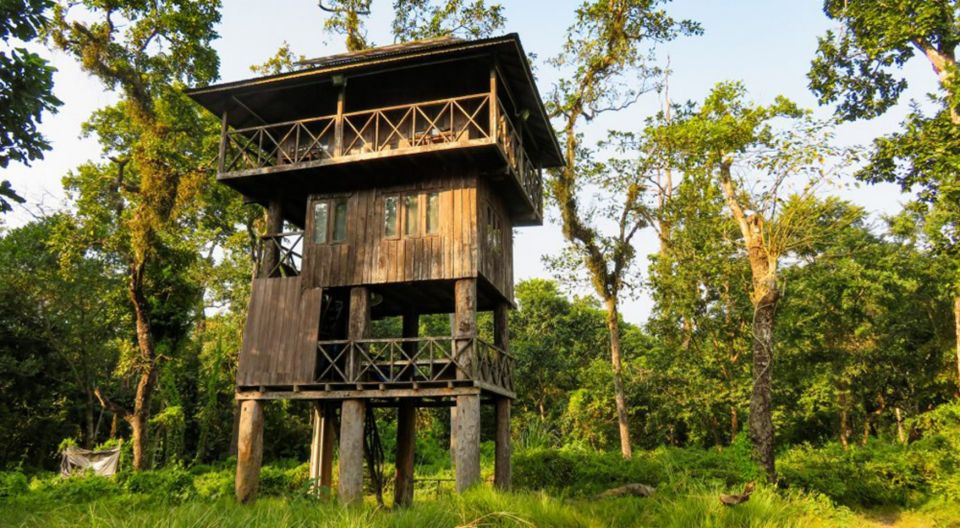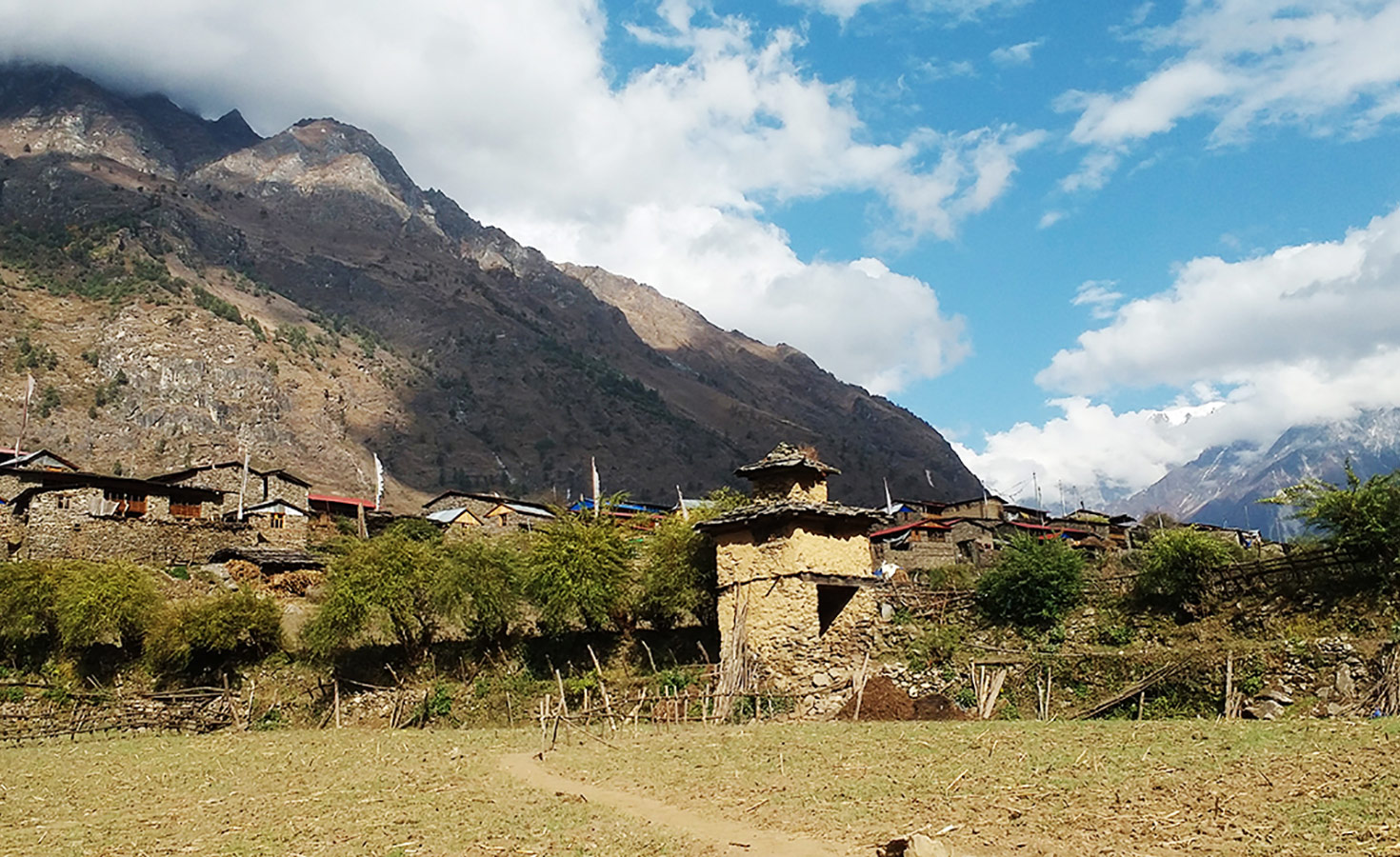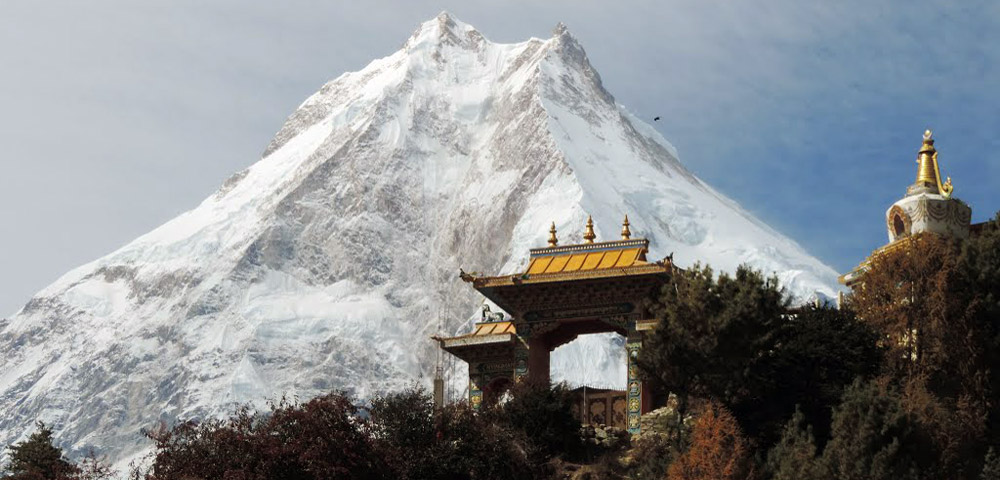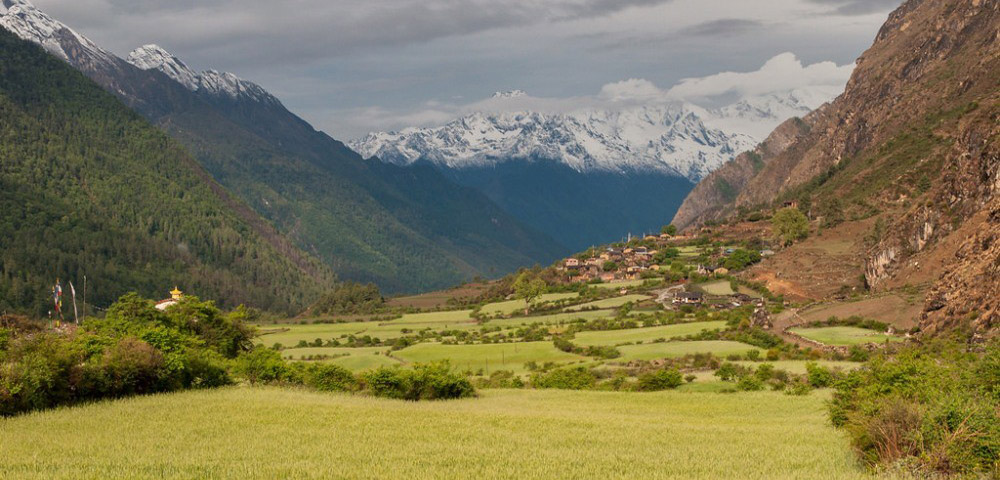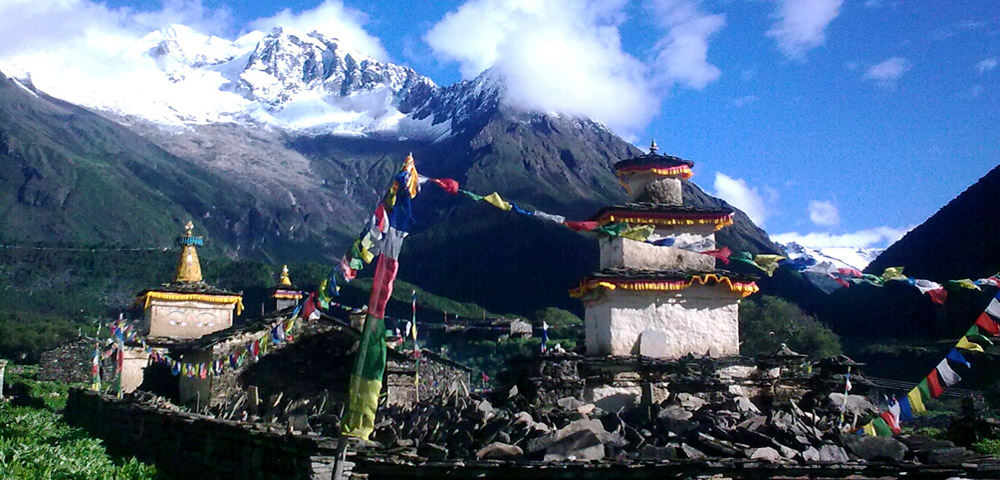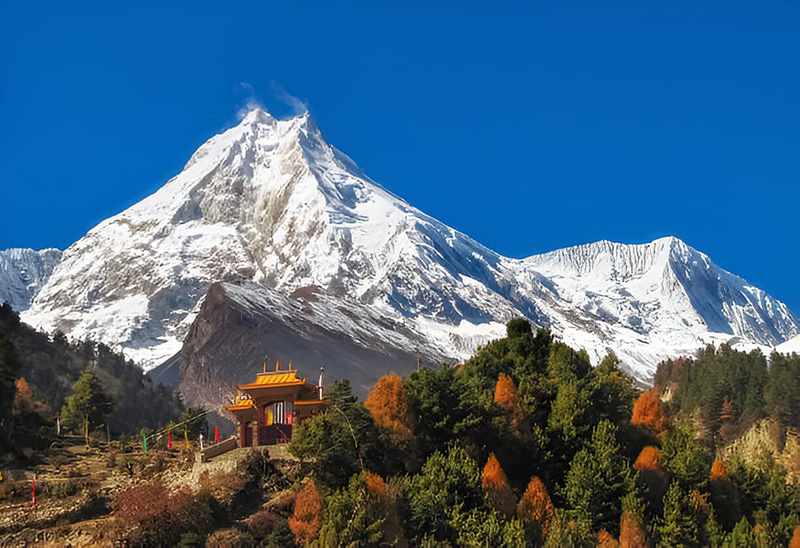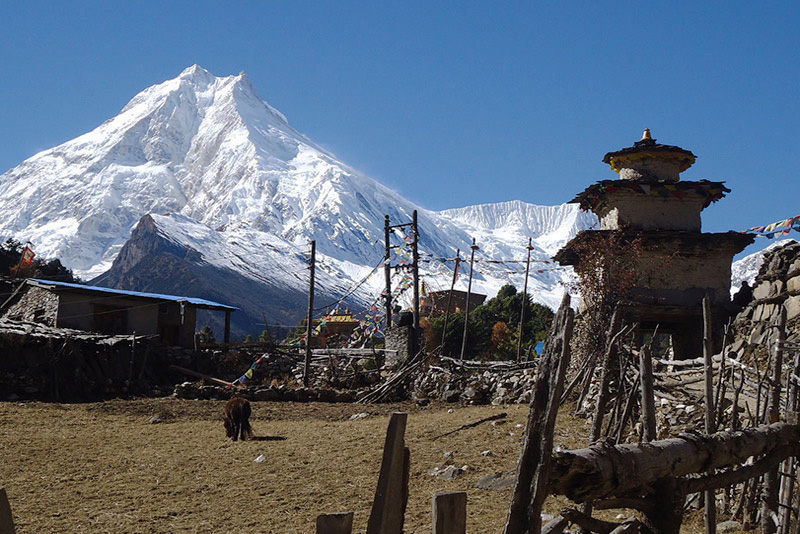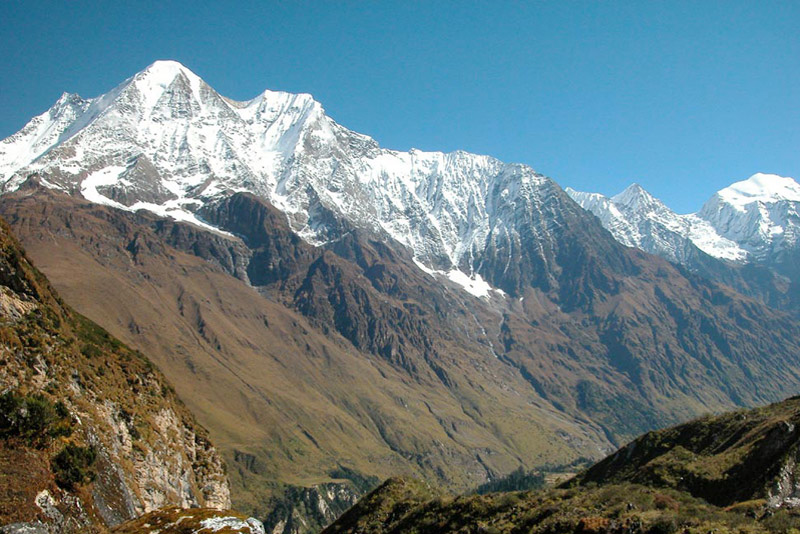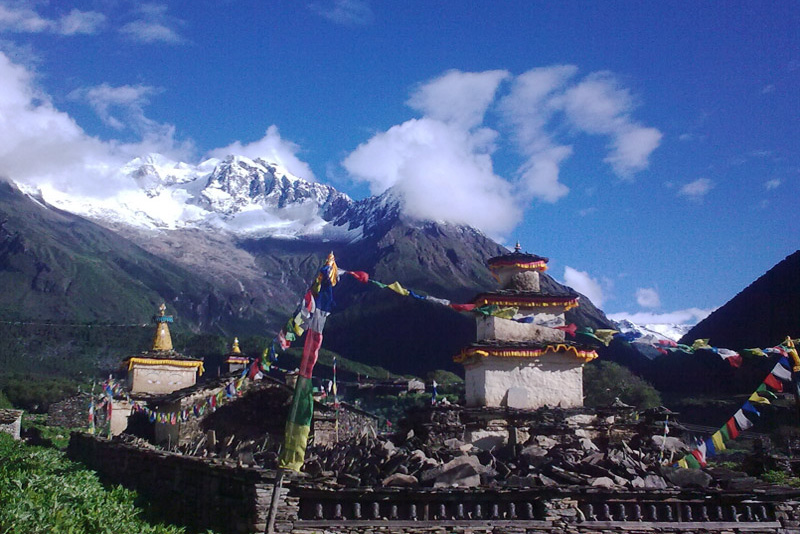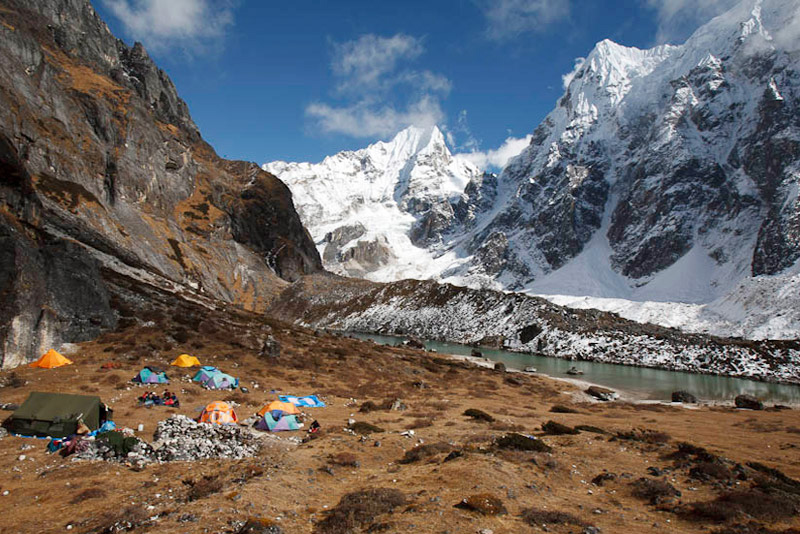Tsum Valley Trek
The Tsum Valley Trek is a culturally and spiritually rich trekking route in the northern part of Gorkha District in Nepal. Known as the “Hidden Valley,” Tsum Valley is nestled between the Buddha Himal and Ganesh Himal ranges and offers a unique blend of stunning natural landscapes and rich cultural experiences. Here are some of the highlights of the Tsum Valley Trek.
The Yak Attack race is the highest mountain bike race on Earth as it traverses through Nepals grand Himalayan mountain range. It starts out on the World famous Annapurna Circuit trek, taking us up over Thorong La pass at 5416 M. From there it goes down to 2800m above sea level over 8km.
Altitude, temperature extremes, harsh living conditions and a very tough terrain make Yak Attack one of the hardest mountain bike races around… If you’re up for an adventure, have mental grit & physical fitness, then why not have an adventure of a lifetime and join us this year?!
Tsum Valley Trek Highlights
Unique Cultural Experience: Tsum Valley is known for its strong Tibetan Buddhist heritage and unique customs. You’ll have the opportunity to visit ancient monasteries, chortens, and stupas, and interact with friendly locals who have a deep spiritual connection to their land.
Mu Gompa: Mu Gompa, one of the highest monasteries in the region, is a significant religious and cultural site. The trek takes you to this serene monastery, offering panoramic views of the surrounding mountains.
Rachen Nunnery: The trek also includes a visit to Rachen Nunnery, where you can learn about the life of Buddhist nuns and the monastery’s importance in the local community.
Stunning Landscapes: The landscapes vary from lush valleys and terraced fields to alpine meadows and rugged mountain terrain. The views of the Ganesh Himal, Sringi Himal, and Buddha Himal ranges are awe-inspiring.
Ancient Trade Routes: The Tsum Valley was historically connected to Tibet via trade routes, and you can still see traces of these ancient routes during the trek.
Local Villages: You’ll pass through traditional Tamang and Tibetan villages, giving you a glimpse into the daily lives and unique cultural practices of the local communities.
Birendra Lake (Chhokangparo): The trek takes you to Birendra Lake, a glacial lake situated at an altitude of about 3,450 meters. The tranquil lake and the surrounding landscapes provide a serene environment for relaxation.
Rich Biodiversity: The region is home to diverse flora and fauna, including various bird species and some elusive Himalayan wildlife.
Homestay Accommodations: The Tsum Valley Trek offers the opportunity to stay in traditional homestays, allowing you to experience the local way of life up close.
Off-the-Beaten-Path: The Tsum Valley is less visited by tourists compared to some other trekking routes in Nepal, providing a quieter and more authentic trekking experience.
The Best time for Tsum Valley Trek
The best time for the Tsum Valley Trek is during the pre-monsoon spring season (March to May) and the post-monsoon autumn season (September to November). These months offer the most favorable weather and trekking conditions for a successful and enjoyable trek. Both spring and autumn offer excellent trekking conditions, and your choice between the two depends on your preferences. Spring is known for its vibrant flora, lush landscapes, and blooming flowers, while autumn provides clear skies, pleasant temperatures, and excellent photography opportunities.
When you arrive at Tibhuvan International Airport, our guide will pick you up and take you to your hotel in the bustling Thamel district of Kathmandu. Depending on your arrival time, you can choose to relax for the next journey, see the city’s attractions, or shop for adventure gear in one of Kathmandu’s many adventure supply stores. We’ll assemble our bikes and be ready for the journey in the afternoon.
On this day, we will take a local bus from Kathmandu to Soti Khola via Dhadingbesi, which would take approximately 7-8 hours. We may reach Machha Khola by a local bus or Jeep. Then, we visit the Labubesi Gurung community after admiring the beautiful rice terraces. While driving, the village of Machha Khola was clearly visible. We will spend the night in Machha Khola.
After a little stroll, we’ll reach Tatopani, a location with a hot spring waterfall. From there, we will ascend a second ridge before crossing the Budhi Gandaki. Ascend the stairway; we’ve arrived at Dobhan. The trail climbs to Duman after crossing a bridge over Dobhan Khola. We’ll reach Yaru Khola by resuming our ascent to the Budhi Gandaki. At the Yaru Khola and Tharo Bharyang, climbers and bridge-crossers engage in similar activities. We shall reach Jagat by crossing the western portion of the BudhiGandakii.
Today, following breakfast, we will go on our excursion. To reach Salleri, we begin ascending a steep, narrow trail to the highlands. Following Salleri, we will descend to Sirdibas. Our trek will continue to Ghatta Khola, with the broad valley rapidly approaching us. After crossing the suspension bridge, we will ascend the tiny slope to reach Philim. The valley is renowned for the modest Japanese-built schools and also contains a police station. After Crossing the Philim to the north along the forest with views of the narrow valley, we ascend for approximately an hour through woodland sections to reach Ekle Bhatti. As we ascend through pine forests, we reach a picturesque valley and descend to a crossroads. We follow the correct path that goes to Tsum Valley, where we will spend the night on Lokpa.
After Ekle Bhatti traverses the valley and after a half-hour of walking on the right side, we have the opportunity to view the large and spectacular waterfall and enter the pine forest. Following a little descent down the slope, we reach Tsum Valley. In addition to pine and rhododendron forests and the best view of the Himalchuli Mountains at 7893m, we can also look out over a small, picturesque settlement. Passing through a pine and rhododendron forest, we reach Gumlung after descending the hill for a half-hour towards Lungwa Khola and ascending a treacherous path for two hours to the north. We finally arrive in Chumling after crossing the Siyar Khola. From Chumling, we may observe Shringi Himal and explore the ancient Chumling gompa and alleyways of the stone village.
By crossing the suspension bridge on the opposite bank of the river, we are afforded the opportunity to glimpse Ganesh Himal. We reach the Gho Village after a short trek from Rainjam to Serpu Khola and crossing another bridge. If we continue to climb Tsum for another two hours, we will reach Chhokangparo Village. If the weather cooperates, we can enjoy views of the 7893-meter Himchuli and the 7140-meter Ganesh Himal. After appreciating such a beautiful vista, we will cross Chokhangparo. As we ascend above Chokhangparo, we must be mindful of the altitude problem. We cross the Lamagaon crossing rope suspension bridge on our way to the Rachen Gompa, also known as the nunnery Gompa. We shall visit briefly before crossing the Shiar Khola. We continue to traverse the villages of Lar (micro hydro power), Phurbe, and Pangdun. We reach the Nile after leaving the old historic Buddha Stupa, traversing the village of Chhule, going upstream, and passing the bridge. If we so choose, we might visit Chhuto, the renowned monastery of Chhule, which is situated on the summit.
Now, we are very near to the Tibetan border. Through Tibetan vistas, proceed to the west bank of the valley. Ascend to the Mu Gompa. We visit the monastery as well. Then, we travel to the Dhephu Doma Gompa.
We continue down the path to Lokpa. After lunch, we continue southward on the level trail. We arrive at Philim after 6 to 7 hours of arduous hiking, during which we stop to see the lovely Samba Falls. The settlement of Phillim is connected to the Ganesh Himal Base Camp through a route.
Today, after a cup of morning tea and a substantial breakfast, we will pack our bags and prepare to descend to Sallery Village. Before reaching sallery village, we will traverse various settlements and pass some of the greatest Mountain Viewpoints along the way.
From Sallery to Machhakhola, we will hike via Jagat and Tatopani. We descend Sirdibas and eventually reach Jagat. We descend farther, bringing us to Yaruphant. After traversing Tibet’s arid atmosphere, we reach subtropical greenery. We continue our walk to Dobhan and reach Tatopani at last. There is a hot spring at Tatopani, and you may relieve your sore muscles by soaking in it. Alternatively, you can continue going ups and downs from Tatopani to Khorlabesi, where you can rest for a day, or the trail crosses the Tharo Khola, which flows through a steep valley. It would be beneficial if you traveled towards the river and to the Machha Khola settlement. You must trek along the Budhi Gandaki River to reach the Labubesi Gurung community. On the steep rocky trail on the side of a vertical rock, you must pass two waterfalls before reaching Khursane. You must traverse the Budi Gandaki’s rim and the Sal forests on foot. You must finally cross the bridge to reach Machha Khola.
Four hours on foot and seven to eight hours on the road are required to ascend to the edge of Kyorpani and descend to the tumbling waterfall. Additional hiking leads to Arkhet through the Arkhet Khola. We are leaving Bunge Gandaki Valley by crossing the Arkhet. We reach Sante Bazaar after traversing the forests at Maltar en route to Sante Bazaar. Following stone streets, we pass by the hydropower plant and arrive at the Arughat Bazar. And after arriving at Arughat Bazaar, we continue our journey back to Kathmandu along the banks of the Marsyangdi and Trishuli rivers, with breathtaking vistas of lush hills, mountains, farming terraces, and villages.
Today we will take you to the airport to catch your flight out of Nepal. Alternatively, if you’d like to stay longer, we may make additional travel arrangements to assist you continue your Nepal experience.
- All necessary ground transfers.
- All necessary accommodations as per the itinerary.
- Tea House accommodations during the trek.
- Daily breakfast, lunch and dinner during the trekking.
- All necessary paper works.
- All necessary trekking permits.
- Experienced and First Aid-trained trekking guide.
- Strong, helpful porters.
- Comprehensive medical supplies.
- Trekking map.
- Insurance of all local team.
- Warm clothing and trekking gear for staff.
- Sleeping bag and trip duffle bag.
- Trekking certificate issued by us.
- Welcome and farewell dinner in Kathmandu.
- Nepal Visa fee.
- International flights.
- All meals not mentioned in inclusions.
- Personal expenses not stipulated.
- Optional add-ons.
- Gratuities.
You might also like...
Top Add-on Trips
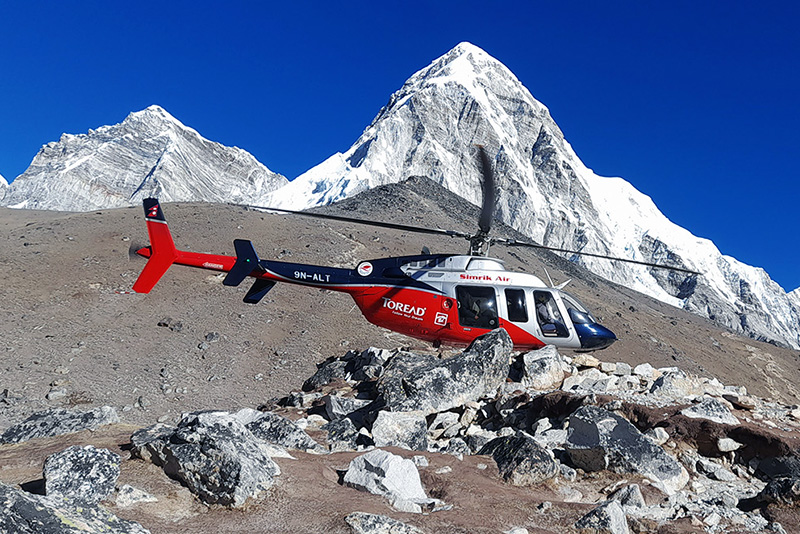
Everest Base Camp Helicopter Tour

Monastery Stay Tour
